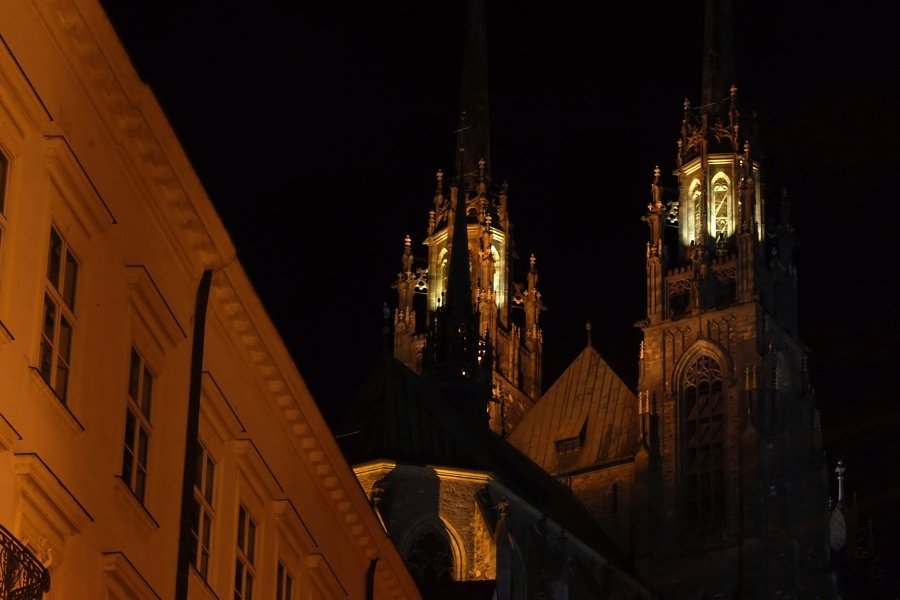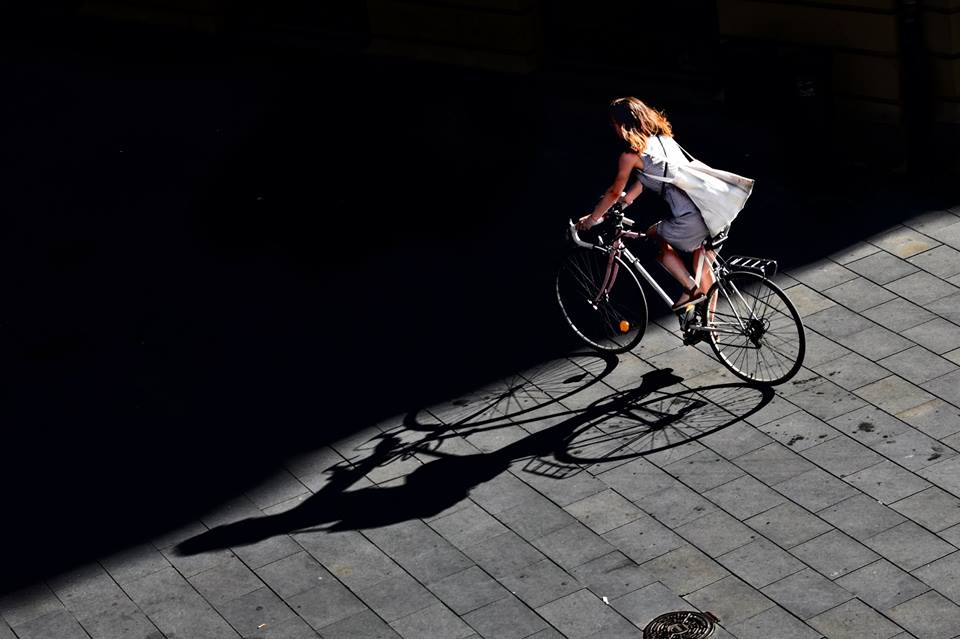Finding religions through Brno

The Czech Republic is world famous for beer, beautiful women, and hockey. It is also well-known for being atheist. The most recent census in 2011 revealed that 34.5% of the population have no religion. The only actual religion to get more than a percentage point was Roman Catholic at 10.5%. (More than 44% were undeclared.) This is one of the highest rates of godlessness in Europe.
Of course, you wouldn’t really know it from the dozens of churches in Brno or the Jehovah’s Witnesses on the street corners or the Hare Krishnas singing and dancing through the center or the soapbox preachers in Myší díra under the train station or the Mormon missionaries. Apparently there is a vacuum to be filled.
Perhaps to combat this feeling, Friday, June 9 is Noc kostelů – Church Night – when the local churches open up in an attempt at marketing. Want to see the backstage of a bona fide cathedral? Here’s your chance. Visitors will have the opportunity to see the towers, sacristy, chapels, cross corridors, monastery refectories, and paradise gardens of most of the churches in Brno.
Bring your camera.
***
My family has been Catholic for many generations into the past, but we never went to church in the United States. So, it was with a little bit of trepidation that I took a job teaching English at a Catholic high school in Brno. I was petrified the first time that I had to talk to an honest-to-God nun dressed in the religious habit of her order. Are you supposed to shake hands? Cross yourself? Genuflect? And, of course, the first thing I did was tykat – speak informally – and, in hurriedly trying to correct my social faux pas, I rambled through several mispronounced Czech sentences.
Apparently I wasn’t the first bumbling idiot. I was told that I could tykat and I have enjoyed talking to nuns ever since. They know a lot about a lot of stuff I would never have imagined. Stereotyping is a bad thing. Nuns and priests have senses of humor, too.
The fact that I teach in a Catholic school is a mark in the plus column with my mother in law. She goes to church several days a week, has subscribed to the religious magazine Katolický týdeník for decades, and reuses Mattoni plastic bottles to store holy water around the house. She frowns upon my working in the garden on Sundays because that is the day that God rested and I should, too. She winces at the common Czech verbal tic of using the Lord’s name in vain. Every Thursday, she hosts a group of church ladies to pray, chant, and sing (and then eat sweets, drink tea, and complain). And the whole household doesn’t eat meat on Fridays. Luckily she allowed me to move in when I was forced out of my apartment, although my fiancé and I officially had separate beds until we were married seven months later.
Despite this overwhelming Catholicism, however, my Brno life has also been infused by Judaism. One of the many things that initially attracted me to my wife was that she was taking a class in Hebrew when we met. In talking with her, I found out that her school thesis had been about the Jewish cemetery in Pohořelice. My closest friends from America were Jews, so clearly it was a sign. (I’m not sure if it was from a Jewish deity, a Catholic deity, the Greek goddess Fortuna, the Flying Spaghetti Monster, or just the blind luck. Clearly, this can all be very confusing.)
It’s not hard to understand my wife’s fascination with Judaism. As relayed in a previous post, the paternal side of her family includes her Jewish grandmother who survived internment at the Theresienstadt (Terezín) concentration camp north of Prague during World War II; my wife’s grandfather, a German, refused to divorce his Jewish wife and spent the war imprisoned in Prague for the crime of polluting German blood. His oldest son was in jail with him and, if not for hiding out in the countryside, his younger son, my wife’s father, was supposed to join them upon turning 16.
As a result, my family celebrates Catholic holidays and acknowledges the Jewish ones, too. (It took years of looking throughout Brno to find a menorah; my wife finally found one in Israel.)
***
Though it is not apparent now, Brno actually has a long Jewish tradition. One district of Brno is named for the Jews who once lived there, but it’s not the one you think: Židenice is named after a man with a Slavic last name; Jundrov is from the German Judendorf, which means Jewish village. That big empty space across the street from Hlavní nádraží Tesco is where the Velká synagoga used to stand; it was burned down by the Nazis in 1939. The current synagogue is visible from the Vlhká stop on the No. 8 tram, but it is easy to miss. The Jewish cemetery – which is worth the guided tour – has its own tram stop farther down the No. 8 route in the direction of Líšeň.
South Moravia has several connections to Judaism. Třebíč, a short train trip away, is an international tourist destination for its Jewish Quarter, which is listed as a UNESCO World Heritage Site because it is one of the best preserved Jewish ghettos in Europe. Mikulov and Boskovice also have significant Jewish pasts. And almost every time I turn on Czech television, there seems to be a documentary about some connection to Judaism.
Meeting Brno, which will hold numerous events around Brno from May 19 to 28 to address the theme of “Unity in Diversity”, will bring together representatives of the Jewish families Löw-Beer and Tugendhat to discuss how their multi-branched family tree shaped the industrial identity and cultural life of Brno until the circumstances of World War II forced them to leave. “Three Villas, Three Families, Three Fates” will be a panel discussion in the Conference Hall of the New Town Hall (Dominikánské nám.1) on Monday, May 22, at 18.
***
I like the traditions and the stories that religions tell. They provide a format, a foundation, a set of moral principles that help us to understand the world. This is especially important during extreme events, like births, life crises, and deaths, but it is also important for when you want to add gravitas to an occasion.
I probably surprised a lot of my friends when I sent them photos of my wedding in the Cathedral of St. Petr and Paul. Nobody in America would have guessed I would walk down the aisle of a European cathedral. We baptized our daughter in that cathedral a couple of years ago and, in a couple of weeks, we will baptize our son Benjamin there, too.
I like the fact that we will have a ceremony that will force us to stop and think about him and us and the way that we are all together for one moment in one place for one occasion. That, I think, is the best thing about religion.
And it produces a lot of good photos.

